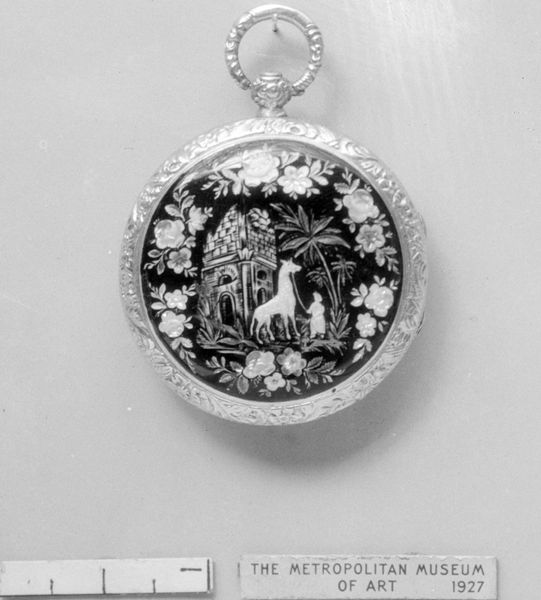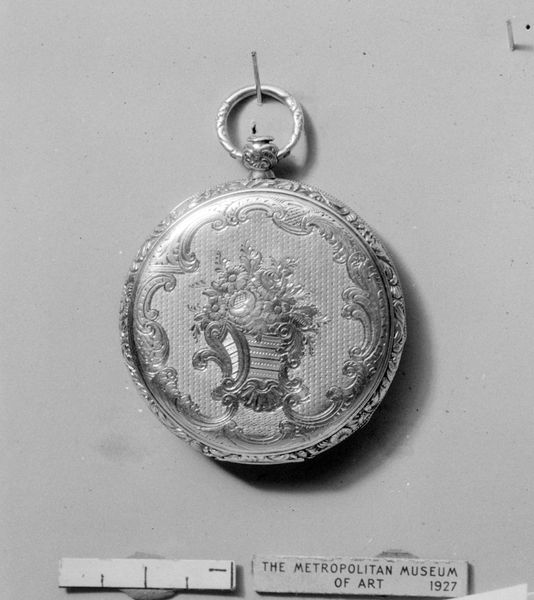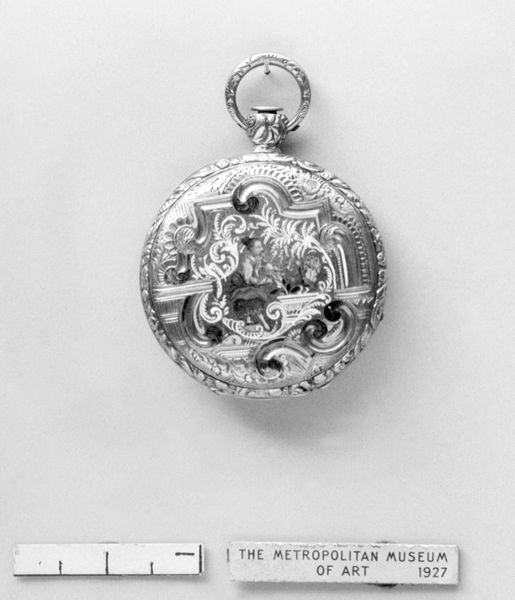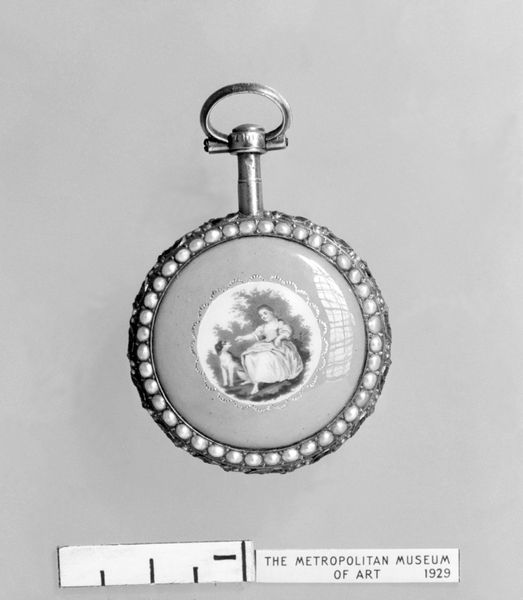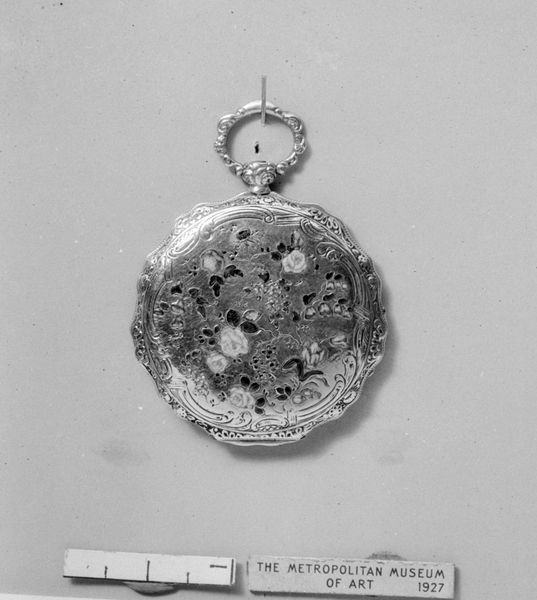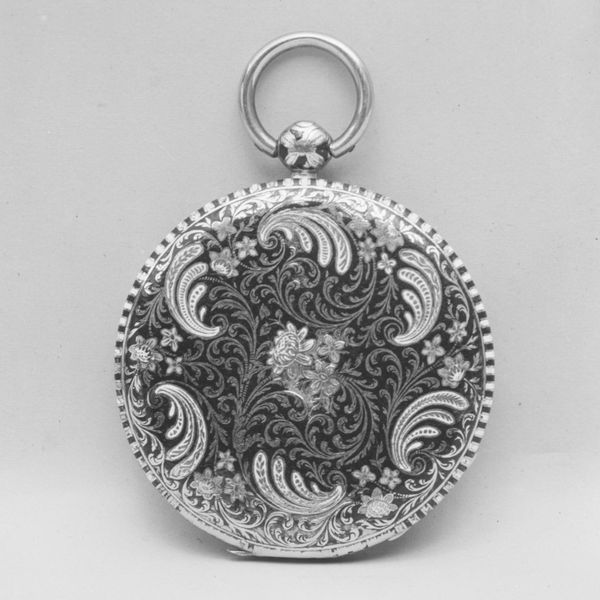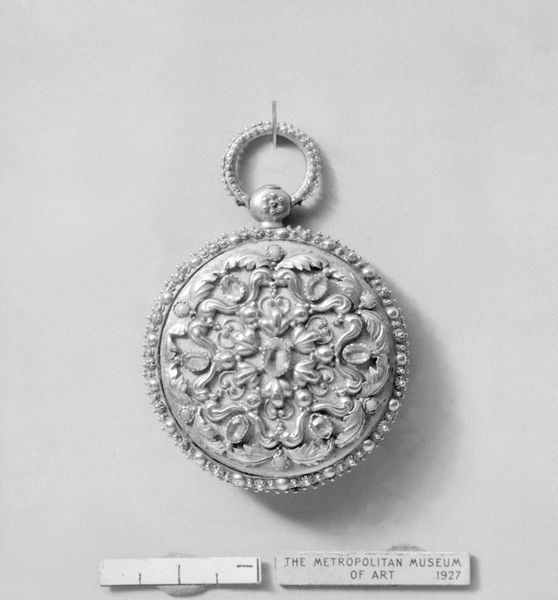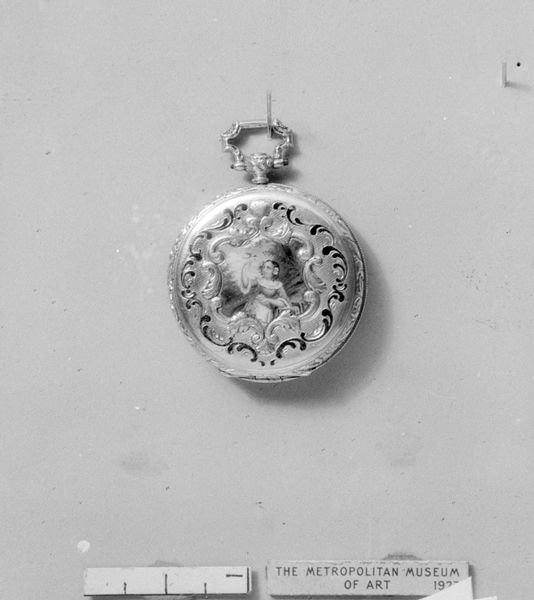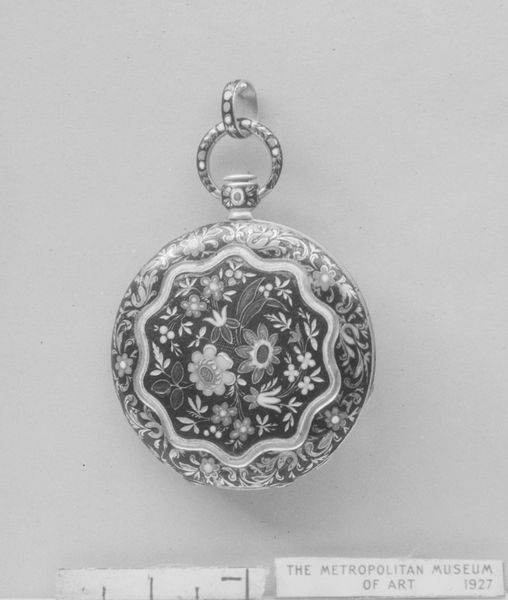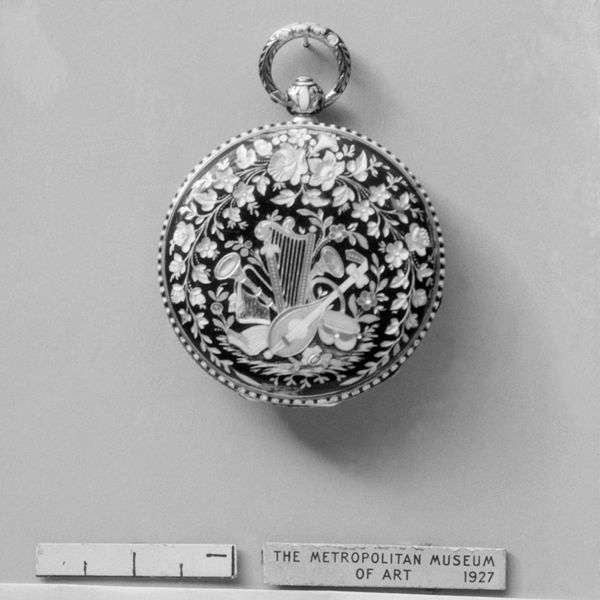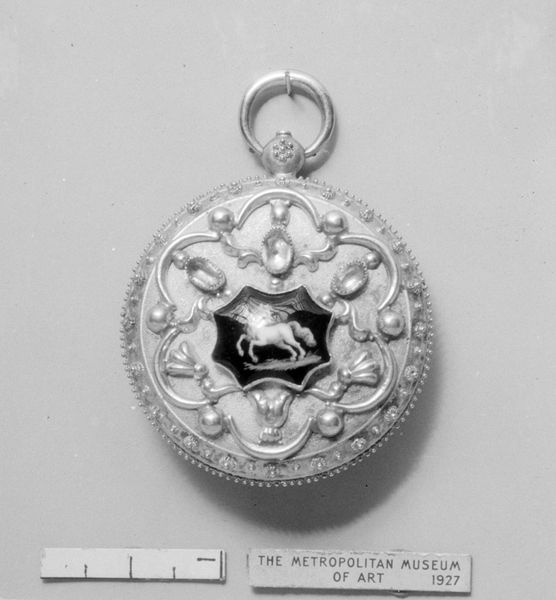
silver, metal, photography, sculpture
#
portrait
#
silver
#
metal
#
photography
#
sculpture
#
jewelry
#
decorative-art
Dimensions: Diameter: 1 7/16 in. (3.7 cm)
Copyright: Public Domain
Curator: Let's talk about this “Watch,” dating from 1837 to 1855, crafted by Jean-François Bautte & Co. Editor: The craftsmanship is undeniable! But, from a distance, the composition seems almost aggressively ornate; that contrast between the shiny metal and pearl details gives a sensation of restrained opulence. Curator: That ornamentation speaks volumes, though. Consider the silversmithing techniques required to produce such minute detail in the scrollwork and pearl setting. These weren't mere accessories, they were statements about the owner’s wealth and social position in the 19th century. How does the surface contribute to this wealth aesthetic? Editor: Absolutely! And in terms of composition, notice how the clustered pearls act as focal points, guiding the eye. I’d love to know about the actual metal forging. I mean the surface qualities give the object weight. The silver reflects light beautifully, but the detailed filigree subverts pure decoration, and creates this visual dynamism and playful composition. Curator: Precisely. The material reflects societal values! During the time that Bautte was crafting objects like these, timekeeping became democratized because manufacturing scaled-up, thanks to industrialization. Editor: Very interesting, looking closely now I am intrigued with the interplay of negative space with those curving lines around the edge! Do you see symbolic motifs woven into the ornamentation? It seems like it features natural imagery and abstracted florals... Curator: It does, those would speak to a fascination with the natural world, very fashionable in the nineteenth century! A wealthy person flaunting an exquisite object of production. A real symptom of economic status. Editor: A symptom perhaps, but what about the function as ornament, and its value within that realm? Thinking purely of the silver elements, what significance does silver material carry as opposed to gold or iron? Curator: Ah, that brings us full circle! Gold often signified established wealth and aristocracy, while silver, becoming more accessible due to expanding silver mines, represents rising fortunes. Silver speaks to aspiration. It's all connected! Editor: Quite illuminating! The conversation on materiality, I think has shifted my initial impression to find more pleasure in its playful arrangement! Curator: Indeed! Seeing objects in relation to production makes you examine differently and gives great social-economic insights!
Comments
No comments
Be the first to comment and join the conversation on the ultimate creative platform.
